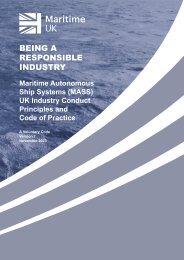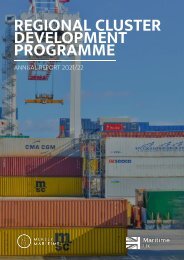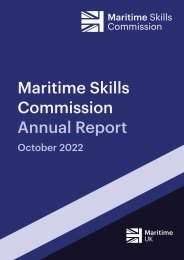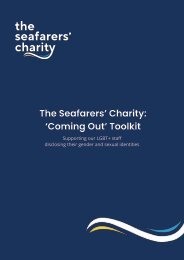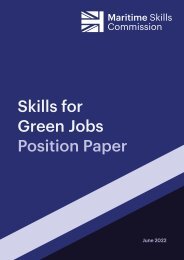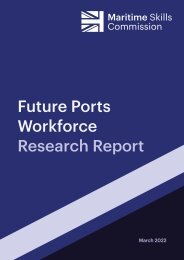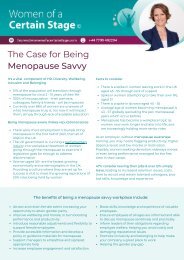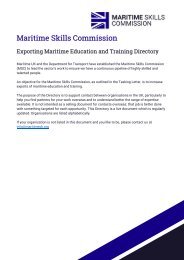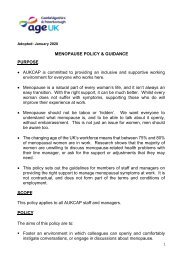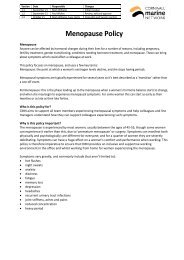code_of_practice_V3_2019
Create successful ePaper yourself
Turn your PDF publications into a flip-book with our unique Google optimized e-Paper software.
5.2 INTERNATIONAL DEFINITION OF AUTOMATION LEVELS IN INLAND NAVIGATION<br />
5.2.1 Automated navigation covers a wide range <strong>of</strong> technical solutions and addresses cases ranging from a simple<br />
navigation assistance to a fully automated navigation. Although technology synergies are expected with the<br />
maritime sector, CCNR has emphasized the specificities <strong>of</strong> inland water transport that should be taken into<br />
account, such as:<br />
n The composition <strong>of</strong> crews<br />
n Navigation in enclosed and restricted conditions<br />
n The passage <strong>of</strong> locks<br />
n The height <strong>of</strong> the water level and under bridges<br />
n The manoeuvrability <strong>of</strong> vessels.<br />
5.2.2 During its plenary meeting in December 2018, CCNR adopted a first international definition <strong>of</strong> levels <strong>of</strong> automation<br />
in inland navigation by its resolution 2018-II-16 in order to ensure a clear understanding <strong>of</strong> automated navigation<br />
as a whole and support further work, including the analysis <strong>of</strong> the regulatory needs. It was aimed at improving<br />
safety and functionality <strong>of</strong> navigation <strong>of</strong> the Rhine and European inland navigation in whole, promoting innovation<br />
and ensuring the uniformity and consistency <strong>of</strong> the legal framework and technical standards applicable on the<br />
Rhine. This definition is valid till 31 December 2020, given that it may be subject to modifications based on the<br />
experience and knowledge acquired.<br />
5.2.3 CCNR invited the European Commission, the Economic Commission for Europe (ECE), the Danube Commission,<br />
the Mosel Commission, the International Sava River Basin Commission, CCNR observer States, the European<br />
Committee for the development <strong>of</strong> standards in the field <strong>of</strong> inland navigation (CESNI) and associations recognized<br />
by CCNR to apply this definition in the context <strong>of</strong> relevant initiatives or work, in particular, in the regulatory<br />
activities.<br />
5.2.4 The definition <strong>of</strong> automation levels in inland navigation is given below. For this purpose, the following terms and<br />
definitions are applied:<br />
n “Dynamic navigation tasks”: the set <strong>of</strong> tactical vessel operations, such as operation <strong>of</strong> the rudder apparatus,<br />
propulsion, anchor winches or elevating wheelhouse. The complexity <strong>of</strong> these tasks depends upon the context<br />
considered (for example, the manipulation <strong>of</strong> anchor winches can be excluded, where the use <strong>of</strong> anchors is<br />
forbidden anyway).<br />
n “Context-specific”: confined navigational conditions such as navigation on specific waterway sections or lock<br />
crossing, as well as vessel arrangements with convoys or platooning. The context includes the infrastructure<br />
relevant for automation, for example, the type and capacity <strong>of</strong> radio transmission networks.<br />
n “Navigational environment”: fixed and dynamic conditions affecting navigation, such as the shape <strong>of</strong> a<br />
waterway, the water level, weather conditions, visibility, vessel crossing and other factors. The navigation<br />
automation system is able to use only a part <strong>of</strong> the available information (for example, under level 1, rate-<strong>of</strong>turn<br />
indicators do not use information on vessel crossing). The response to the navigational environment<br />
includes the radiocommunication with boatmasters <strong>of</strong> other vessels.<br />
n “Collision avoidance”: the critical task in responding to the environmental conditions (other vessels, bridges,<br />
etc.).<br />
MASS UK Industry Conduct Principles and Code <strong>of</strong> Practice Version 3 41




